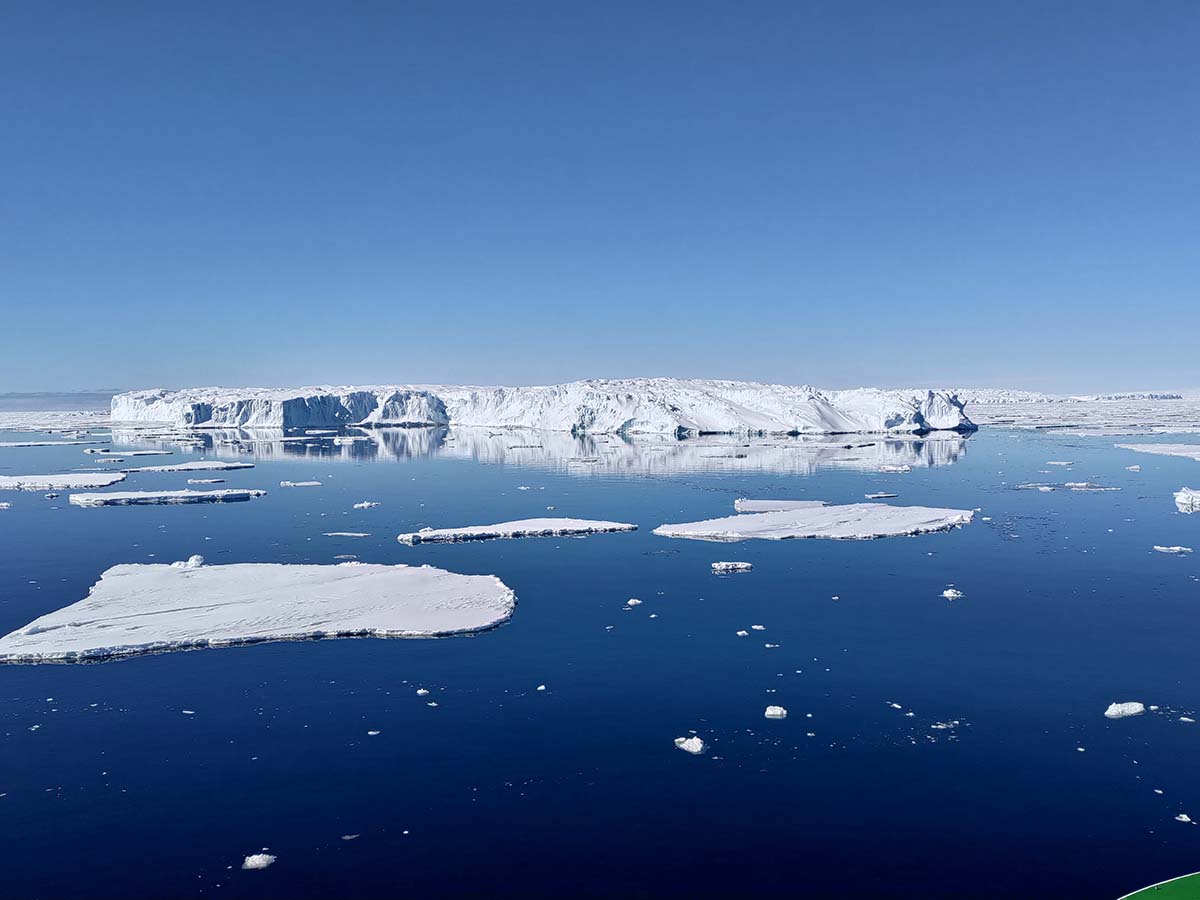Atlantic Meridional Overturning Circulation was more stable than thought
A study by the University of Bern concludes that at the end of the last ice age there was not, as previously assumed, a complete collapse of the ocean circulation in the Atlantic, which provide a mild climate in Europe. This realization has implications for the discussion on climate tipping points.
The climate does not change linearly. If the ice in Antarctica melts or the Amazon rainforest disappears, this may have irreversible consequences for the Earth system. Once such climate tipping points are passed, the climate could change abruptly due to spillover and cascade effects. The system enters a new stable state and cannot return to its initial state.
The Intergovernmental Panel on Climate Change (IPCC) has identified 15 such tipping points. One with particularly severe global consequences would be the collapse of the ocean circulation in the North Atlantic, which includes the Gulf Stream. It redistributes heat, oxygen, and nutrients in the Atlantic Ocean and gives Europe a mild climate. There is currently a heated debate in the climate research community about how close we are to individual tipping points and whether we may have already passed some.
Now, a study conducted at the University of Bern and just published in the Nature Geoscience journal brings new insight to this discussion. The key message of the study: The Atlantic circulation has historically been less sensitive to climate change than thought. However, according to the researchers, this does not give any reason to sound the all-clear with regard to the current situation.
Never before has the climate changed as quickly
“It was previously assumed that this tipping point threshold was significantly exceeded during the transition from the last ice age to the current warm period about 15,000 years ago,” says Frerk Pöppelmeier, the study’s lead author. “However, our investigations now show that the Atlantic circulation weakened much less than assumed.” What this finding means for the future, however, is unclear, says Pöppelmeier, who is an EU Marie Curie Fellow and postdoctoral researcher at the Department of Climate and Environmental Physics and a member of the Oeschger Center for Climate Research at the University of Bern.
The processes leading to a tipping point in the North Atlantic ocean circulation are not yet fully understood. However, it is clear that the current conditions are fundamentally different from those at the end of the last ice age. Above all, the present change caused by mankind is proceeding at a much faster pace. “Human influences have put Earth in a state that has never existed in the documented past. Therefore, the future development of the tipping points is difficult to estimate,” emphasizes geoscientist Frerk Pöppelmeier. However, there are indications that the Atlantic circulation may already have weakened by 20 percent since pre-industrial times, approaching a tipping point.
No all-clear for climate change today
According to the study authors, it is therefore not appropriate to sound the all-clear. The Bern study suggests that the melting of Greenland’s ice in the near future will have less of a negative impact on the Atlantic circulation than previously thought. Yet, other factors that lead to large amounts of fresh water running into the Atlantic and affect circulation could play an important role. For example, rapidly melting sea ice, changing winds, and a more intense water cycle.
The Bernese researchers obtained information on past climate from marine sediment cores and combined it with model simulations for their study. Changes in the Atlantic circulation since the last ice age were reconstructed using several geochemical proxies (indirect indicators of climate from natural archives). Information can be obtained about the current strength and origin of the water masses in the Atlantic from the isotopic ratios of different elements in the sediment cores.
The “Bern3D” model developed at the University of Bern, which also simulates these proxies, was then used to investigate how the confounding factors affect the Atlantic circulation. The direct comparison between reconstructions and simulations finally showed unanimously that the previously assumed complete collapse of the ocean current in the Atlantic at the end of the ice age did not occur.
More research needed on climate tipping points
The study by Frerk Pöppelmeier and colleagues focused on the influence that melting continental ice exerts on the strength of the Atlantic circulation. More research is needed to understand the importance of other influencing factors such as sea ice and wind conditions. This applies to understanding climate tipping points more generally. Climate physicist Thomas Stocker of the Oeschger Center at the University of Bern, who was also involved in the study, emphasizes that climate science still knows too little about tipping points to make any statement about how close we are to these thresholds today. “The state of research doesn’t allow for that,” he says. Stocker therefore advocates that the IPCC produces next a special report on tipping points and their potential impacts. “That would guarantee,” he explains, “that science comes to a robust consensus.”
Information about the publication:F. Pöppelmeier, A. Jeltsch-Thömmes, J. Lippold, F. Joos, T. F. Stocker: Multi-proxy constraints on Atlantic circulation dynamics since the last ice age. Nat. Geosci., (2023) |
Oeschger Center for Climate Change ResearchThe Oeschger Center for Climate Change Research (OCCR) is one of the strategic centers of the University of Bern. It brings together researchers from 14 institutes and four faculties. The OCCR conducts interdisciplinary research at the cutting edge of climate change research. The Oeschger Center was founded in 2007 and bears the name of Hans Oeschger (1927-1998), a pioneer of modern climate research, who worked in Bern. Further information: www.oeschger.unibe.ch |
2023/04/03



